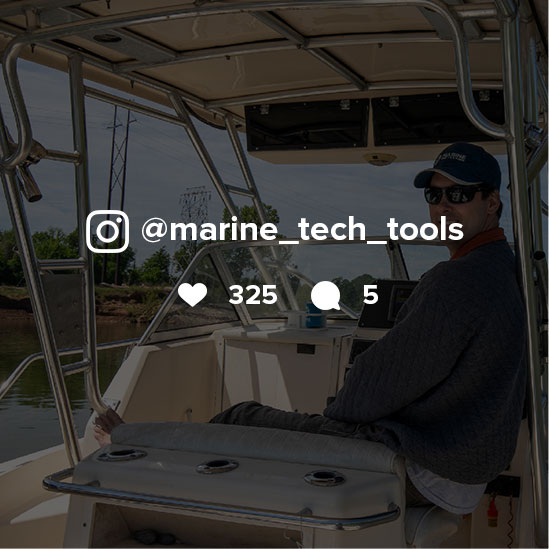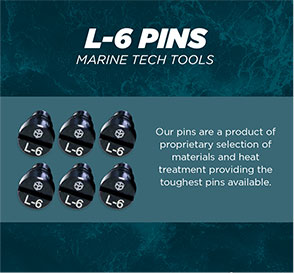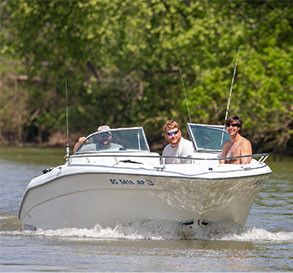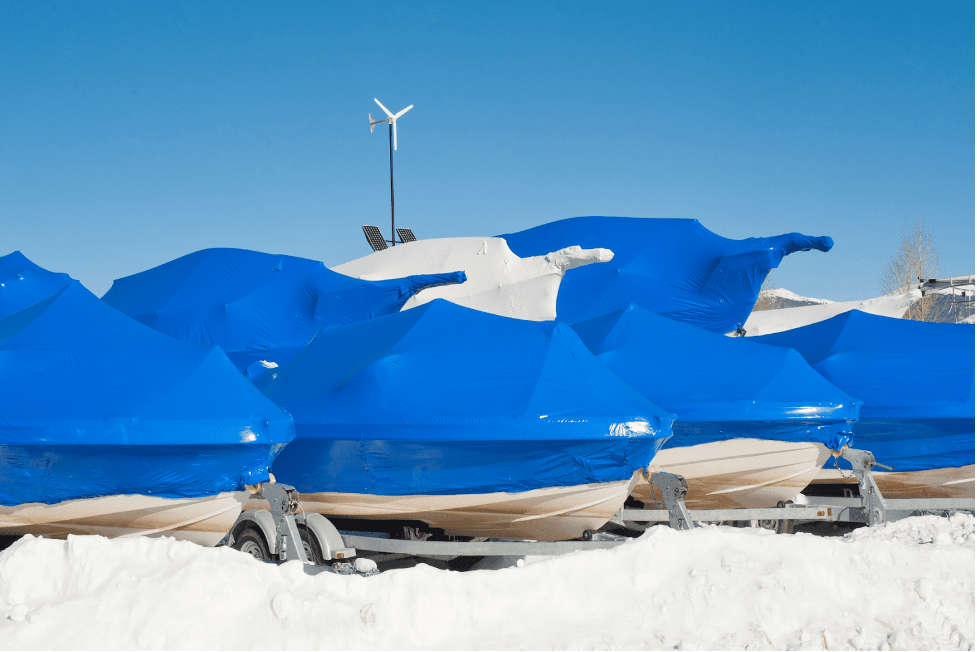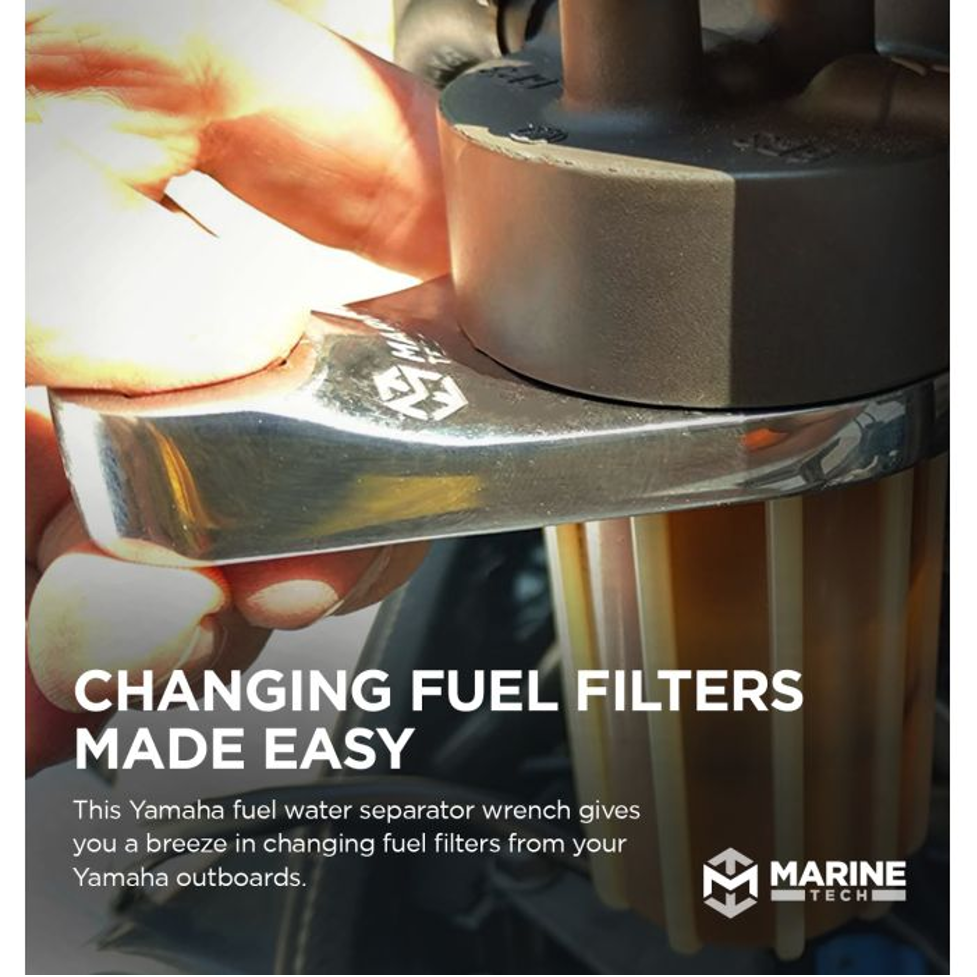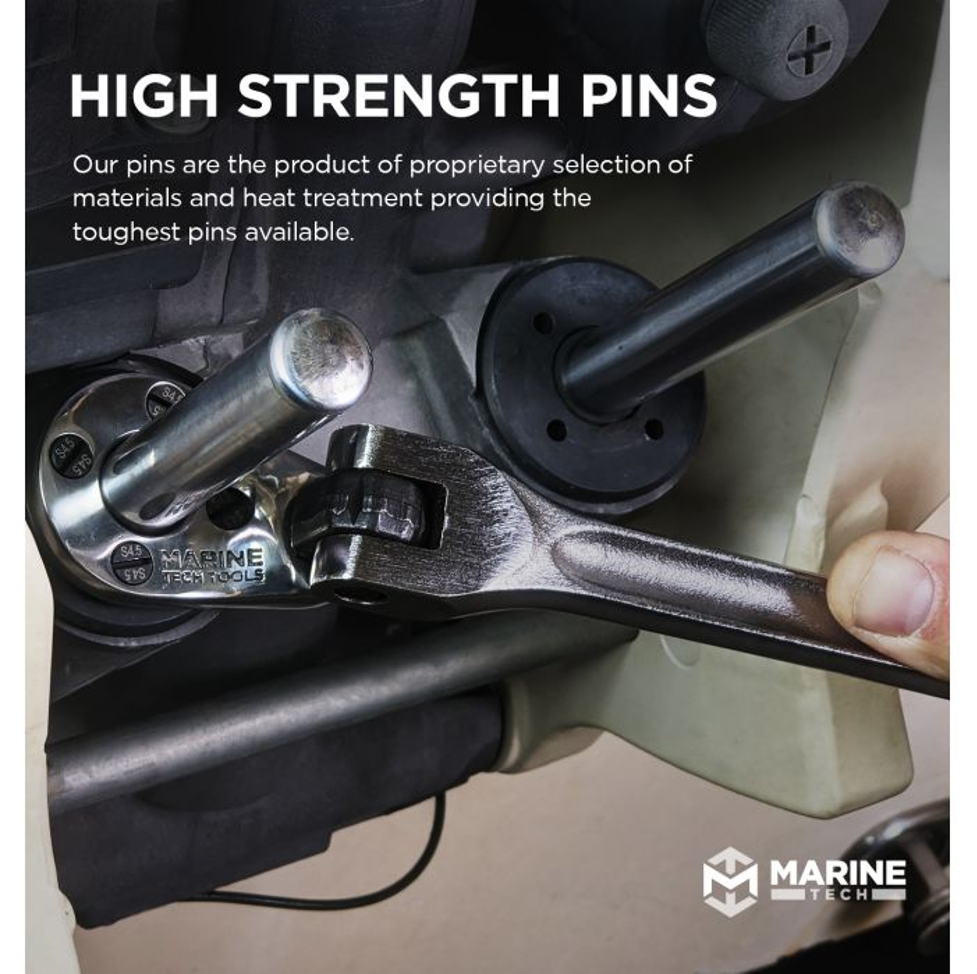Boating—the activity where we constantly search for the perfect balance between playing in the sunshine and hiding from the sunshine.
While being outdoors and on the water is part of the draw, skin damage is real—in fact, skin cancer is the most common form of cancer in the U.S.
Let’s explore how to keep our on-the-water days carefree and safe with a few sun care tips.
Shade—Simplicity at Its Best
Shade—whether you seek it from the brim of your hat or under the bimini—can provide relief and protection from the sun.
But out on the water, shade has its limitations. For one, we are often actively moving around. Fishing, swimming, wakeboarding… etc...
In addtion, water reflects the sun back up, often sending the sun’s rays wherever we happen to be on the boat..
So, shade–while important–is not enough protection on its own.

Sorting Out Sunscreen Choices
Wear good sunscreen.
Well, that seems like an obvious tip. No?
Yes, it is. But deciding what sunscreen to buy?
That is the challenge.
Let’s dive into deciphering all the bold claims and acronyms you’ll find on sunscreen bottles, so you can confidently grab the best one to toss in your boat bag. Then you can move on to more exciting things like catching a big ole king mackerel!
SPF:
Sun Protection Factor is a relative rating that consumers can use to compare how much protection a product provides from harmful UVA and UVB rays. (For example, SPF 50 gives more protection than SPF 30.)
It’s a common myth that SPF determines how much time you can spend in the sun. For example, 30 times longer. It doesn’t have anything to do with duratio.This can change based on variables like time of day, cloudiness, location, and skin type.
UVA & UVB:
UVA and UVB are the ultraviolet rays that cause skin damage. UVA rays penetrate deep into the skin and are associated with long-term damage like wrinkles, spots, and uneven skin tone.
UVB rays affect the outer skin layers and is associated with immediate skin damage. Like burning.
Both UVA and UVB rays are associated with skin cancer.
Broad-spectrum
When a sun-care product protects against UVA and UVB rays, it is labeled as a broad-spectrum sunscreen. (You’ll want to go with a broad-spectrum option)
Water-resistant
No sunscreen is waterproof or sweatproof. But there are two different levels of water resistance. By FDA law, water-resistant sunscreens need to state whether they need to be reapplied every 40 minutes or every 80 minutes.
Reef safe (chemical vs. mineral)
There are two primary types of sunscreen—mineral, and chemical.
Mineral sunscreens physically block the UV rays from reaching your skin cells.
Chemical sunscreens, on the other hand, absorb and transform the UV rays into heat which is released from the body.
Both are effective.
The concern is that many chemical-based sunscreens contain ingredients that are known to damage our ocean's reefs. As a result, some coastal municipalities have banned the sale of sun care products with the most harmful ingredients.
Unfortunately, there are no rules on what can be labeled as “reef safe” on suncare products yet. That means we have to look at the ingredient list to make an educated purchase.
Mineral sunscreens will have the ingredients zinc oxide or titanium dioxide. Chemical-based, reef-harming ingredients include oxybenzone and octinoxate.
Taking your sun care selection one step further, the size of particles used in your sunscreen also determines how safe it really is for our oceans…
Micro-sized (or non-nano) vs. nano-sized
Mineral sunscreens fall into these two primary groups. Choosing the micro-sized (also called non-nano) option is healthier for our reefs because the particles are too large to be ingested by coral. The smaller particles (nano-sized) can be ingested by coral and are toxic to the living reefs. (Simple tip: nano is a no-go.)
In summary: Look for a non-nano mineral-based, broad-spectrum, water-resistant sunscreen with an SPF over 30. (try saying that 3-times fast!)
Just as shade has limits, sunscreen does too. It’s easy to forget to reapply continually. It’s not 100% successful, and there are environmental concerns if we’re in the water.
So what else should we do?

Sleeves—The Ultimate Sun Protection
Let’s be honest, few of us apply sunscreen frequently enough to get its full protection. Am I right?
That’s where sun-protection clothing steps in.
Protection that lasts all day—no matter where you are or what you’re doing.
This means deciphering one last acronym…UPF (Ultraviolet Protection Factor).
UPF is a laboratory-determined rating that signifies what fraction of rays are blocked in a garment. For example, a UPF 50 fabric blocks 1/50th of the rays–or 98 % of rays. That is a significant amount, especially when you consider it protects you all day wherever you are
But not all clothing provides this level of protection from the sun.
According to SkinCancer.org, an average white T-shirt only provides a UPF of 7. And that reduces to about only 3 when it gets wet!
That’s why Marine Tech’s UPF 50 long sleeves shirt collection is a fan favorite. They provide reliable sun protection, are moisture-wicking, breathable, loose-fitting, and come in a great selection of prints and colors.
UPF clothing is a smart sun care choice–especially with long sleeves.
Besides slipping on a UPF-rated long-sleeve shirt, it’s important to also wear hats, sunglasses, and neck gators to help defend from the damaging rays.
Plus, all of these options are 100% reef safe!
Sun Care Simplified
Sun care on the water is as essential as staying hydrated and wearing life jackets.
So, rig up the shade awning, swipe on your favorite mineral sunscreen, grab a UPF 50 shirt and enjoy a carefree, sun-care-safe day on the water. Just maybe, there will be grouper on the grill tonight to cap off the perfect day.
Recommended Blog Posts:



